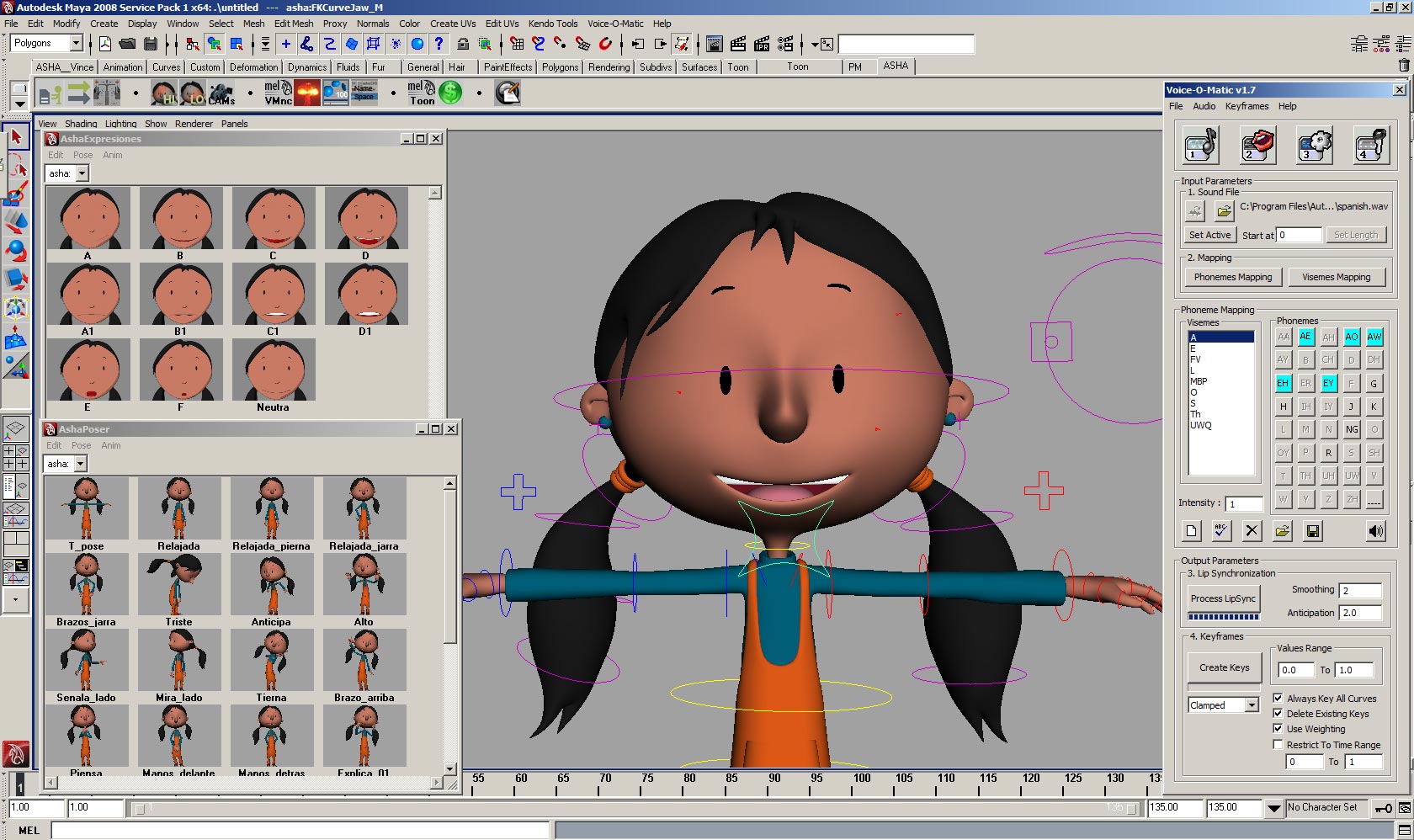Auto Rig For Maya


The Quick Rig tool is a quick way to create a character rig for a standard character mesh. There are two ways you can create a character rig with this tool. Maya Auto Rig - Duration: 2:13. Mohammad Jafarian 3,843 views. Modeling Workflow in Maya 2018 - Duration: 3:30. Autodesk 85,507 views.
From the HumanIK window Start Pane, select Quick Rig Tool (Window >Animation Editors >HumanIK) Select Windows >Animation editors >Quick Rig From the Rigging menu. Maya Auto Rig Script Free Download A biped auto rigging script using Python. Used in production for the game studio Reanimted Frogs last three games.
FEATURES Anzovin Rig Tools allows you long overdue control of your Maya rigging process. UNPARALLELED SPLINE-BASED RIGGING AND DEFORMATION Rotation-minimizing frames ensure that twisting the mesh along the spline is always smooth no matter how far you push it, and an “inherit twist” feature lets you keep unwanted twist out of problem areas like the shoulders. The ability to add “Bone CVs” at any point during the rigging or animation process ensures that you can always take advantage of ART’s spline-based nature. ART’s bones may look like Maya’s joints, but they aren’t: each chain of ART bones is a spline, and the centerpiece of ART’s toolset is our spline deformation.
Far from a simple wire deformer, ART’s unique Volume-Preserving Pipe-Space deformer (or VPPS) intelligently warps the space around the spline as it bends, producing excellent deformation for very little work. BUILT-IN POSE-SPACE DEFORMATION AND SIMPLE MUSCLE SYSTEM S The most perfect default deformation is no good if you can’t control it. ART provides high level tools for controlling the deformation at a joint, including the unique “mesh spread” that gives the VPPS deformer its smooth appearance, and an adjustable “inner smooth” that maintains volume in the joint. When art-directable precision is called for, you can use ART’s built in pose-space deformer to sculpt the exact shape the mesh should assume in a given position. Our pose-space deformer can be driven by any rotation or translation inputs, but it can also be driven by the ART spline directly to ensure that the right sculpted pose is applied, even when the limb is being deformed by Bone CVs.
EASY TO MULTI-THREAD The VPPS deformer is a lot more computationally intensive than conventional linear-blend or dual quaternion deformation. Xoftspyse License Key. Santana Ultimate Collection Rar. However, in practice most of the computation time in a conventional rig actually goes to node-graph evaluation of the potentially tens of thousands of nodes needed to create modern rig behavior. This graph evaluation isn’t easily multithreaded, so rig speed has stagnated even as the number of cores in a modern workstation has increased. We’ve built VPPS to be easily parallelizable. What that means in practice is that the more hardware you throw at it, the faster it gets. With one core it may lag behind convention rigs with similar features, but with eight it easily overtakes them, and on the massively parallel hardware of the future it will be blazingly fast.
Also, while we do not currently plan on a GPU implementation for our initial release, VPPS is very appropriate for GPU implementation, opening up the possibility of scenes with dozens of characters all playing back in real time, or implementation into a game engine. FITS A REAL PIPELINE Auto-rig tools like TSM take some of the sting out of conventional rigging, but they’re also a “black box”--you put some information about joint locations in one end, and get a rig out the other, without much control over what happens in the middle. As a result, general-purpose auto-rig tools are often unsuitable for larger productions that require tightly controlled pipelines but ART isn’t an auto-rig tool--it’s a whole new set of nodes that can be called and connected through Python just like any other nodes in Maya. We’ve gone out of our way to make sure that the flow of information through ART nodes in the node graph is laid out in a clear and understandable way, with attributes to kick out useful information like the arc length of a bone or bone chain. It’s easy to integrate ART nodes into your existing rigging pipeline, whatever your size. FREQUENTLY ASKED QUESTIONS We’ve been working on ART for four years now, and we’re incredibly proud to be able to give you a first glimpse into the possibilities offered by ART’s unique toolset.